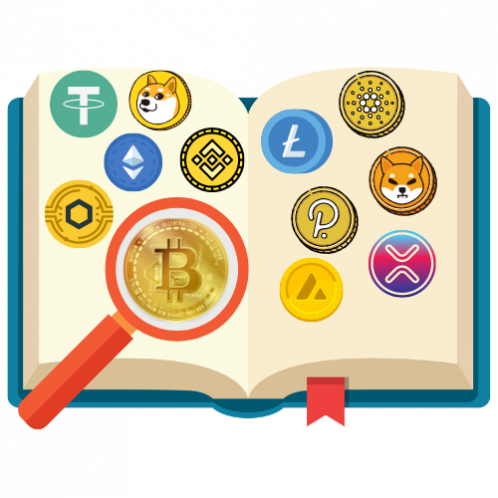Introduction
Web 3 is a decentralized and user-centered vision for the future of the internet. It is often described as the “Semantic Web” or “The Third Generation of the Web”. Unlike its predecessor, Web 2.0, Web 3 aims to create a more open, transparent, and secure internet that empowers users and eliminates intermediaries.
Web 2 vs Web 3
Web 2.0 is the era of the internet that began in the early 2000s and focused on user-generated content, social media, and collaboration. This era brought us popular websites like Facebook, YouTube, and Wikipedia. Web 2.0 was a major shift from the first generation of the web, which was largely read-only and limited to basic information sharing.
Web 3, on the other hand, represents a significant leap forward from Web 2.0 in terms of decentralization, privacy, and interoperability. Web 3 is built on blockchain technology and is designed to give users more control over their data and online identity. It also enables the creation of decentralized applications (dApps) that can be built on a distributed network, eliminating the need for a central authority or server.

Introduction

Web 3 is a decentralized and user-centered vision for the future of the internet. It is often described as the “Semantic Web” or “The Third Generation of the Web”. Unlike its predecessor, Web 2.0, Web 3 aims to create a more open, transparent, and secure internet that empowers users and eliminates intermediaries.
Web 2 vs Web 3
Web 2.0 is the era of the internet that began in the early 2000s and focused on user-generated content, social media, and collaboration. This era brought us popular websites like Facebook, YouTube, and Wikipedia. Web 2.0 was a major shift from the first generation of the web, which was largely read-only and limited to basic information sharing.
Web 3, on the other hand, represents a significant leap forward from Web 2.0 in terms of decentralization, privacy, and interoperability. Web 3 is built on blockchain technology and is designed to give users more control over their data and online identity. It also enables the creation of decentralized applications (dApps) that can be built on a distributed network, eliminating the need for a central authority or server.
Decentralization and Privacy
One of the key features of Web 3 is its decentralized architecture, which enables users to connect directly with each other, without the need for intermediaries. This decentralization also provides a higher level of security and privacy, as users’ data is stored on a distributed network, making it much more difficult to hack or manipulate.
In Web 2.0, user data is often stored on centralized servers, which are vulnerable to cyberattacks, data breaches, and privacy violations. In addition, online service providers often collect and monetize user data, which can leave users feeling like they have lost control of their personal information.
With Web 3, users have complete control over their data and can choose who has access to it. They also have the ability to monetize their data, rather than having it taken and used by others without compensation. This creates a more equitable and secure online environment, where users are treated as partners, rather than just sources of data.
Interoperability
Another advantage of Web 3 is its ability to enable interoperability between different applications and platforms. In Web 2.0, applications are typically siloed, meaning they can’t easily communicate with each other or share data. This can make it difficult for users to move their data and applications from one platform to another, and can also create barriers to innovation.
With Web 3, however, applications can be built on a common infrastructure, allowing them to communicate with each other and share data more easily. This creates a more open and dynamic environment for innovation, where developers can build new applications that leverage the data and functionality of existing applications.
Impact on the World
Web 3 has the potential to have a profound impact on the world, transforming many aspects of our lives, from the way we do business to the way we interact with each other. Here are a few possible examples of how Web 3 may impact the world:

1. A More Equitable and Decentralized Economy
Web 3 has the potential to create a more equitable and decentralized economy, where value can be created and exchanged without intermediaries. For example, peer-to-peer platforms like Airbnb and Uber could be replaced by decentralized versions that allow users to connect and transact directly with each other, without the need for a central authority.
2. Increased Privacy and Security
Web 3’s decentralized architecture and cryptographic algorithms provide a much higher level of privacy and security than Web 2.0. This could have a significant impact on sensitive industries such as finance, healthcare, and government, where sensitive information must be protected. For example, Web 3 could enable secure and decentralized voting systems, where votes are stored on a distributed network and can be audited in a transparent and secure manner.
1. A More Equitable and Decentralized Economy
Web 3 has the potential to create a more equitable and decentralized economy, where value can be created and exchanged without intermediaries. For example, peer-to-peer platforms like Airbnb and Uber could be replaced by decentralized versions that allow users to connect and transact directly with each other, without the need for a central authority.
2. Increased Privacy and Security
Web 3’s decentralized architecture and cryptographic algorithms provide a much higher level of privacy and security than Web 2.0. This could have a significant impact on sensitive industries such as finance, healthcare, and government, where sensitive information must be protected. For example, Web 3 could enable secure and decentralized voting systems, where votes are stored on a distributed network and can be audited in a transparent and secure manner.
3. Empowerment of Individuals
Web 3 empowers individuals by giving them greater control over their data and online identity. This could lead to a more open and equitable society, where individuals are able to freely express themselves, share their ideas, and participate in the creation of new products and services. For example, Web 3 could enable users to store their medical records in a secure and decentralized manner, giving them greater control over their personal health information.
4. New Forms of Collaboration and Creativity
Web 3 enables new forms of collaboration and creativity, as users can easily communicate and share data across different platforms and applications. This could lead to new forms of social interaction, such as decentralized communities and marketplaces, where individuals can collaborate on projects, create new products, and exchange goods and services.
Conclusion
In conclusion, Web 3 represents a significant shift from Web 2.0, offering a more decentralized, secure, and interoperable internet. Web 3 has the potential to transform many aspects of our lives, from the way we do business to the way we interact with each other. While the full potential of Web 3 has yet to be realized, its impact is likely to be profound, as it provides individuals and organizations with new opportunities to create and exchange value in a more equitable and secure manner.


